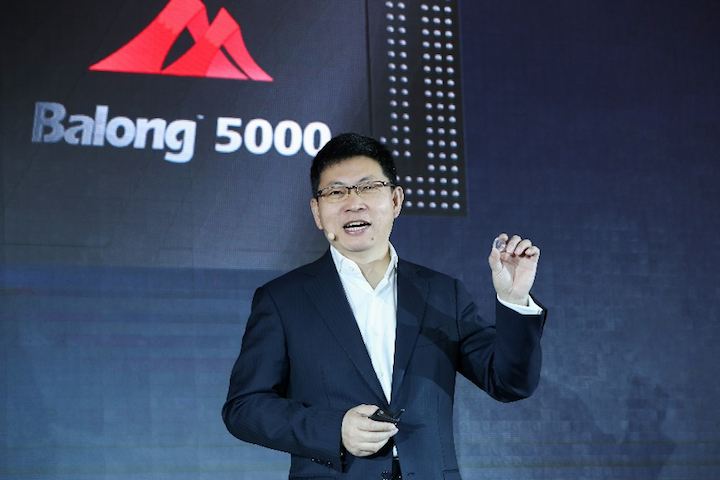
Huawei will show at least one 5G smartphone at Mobile World Congress at the end of February, powered by its high-tech new 5G modem chipset and the Kirin 980. What’s more, CEO Richard Yu says its world-first 5G devices at the show will include one with a foldable screen.
The news comes from a 5G-related pre-briefing held in Beijing, where Huawei’s new Balong 5000 5G modem was announced. CEO Yu took to the stage at the end of the event to talk through the new chip, and showed a slide saying, “We’ll see you in Barcelona. So will 5G smartphones!”

In a translation of the presentation, shared on Huawei Mobile’s official YouTube channel, Yu is quoted as adding, “We will launch the world’s first 5G smartphone with a foldable screen.” We have heard plenty about Huawei’s foldable smartphone already, and Yu has previously confirmed the device will have a 5G connection.
There are still plenty of questions though. Will Huawei announce more than one 5G smartphone, or will the folding model be the only one? Because we’re working on translations, we’re cautious to speculate. It’s also unclear whether the folding smartphone will be ready for release, or a close-to-final concept. It was not known the device would make its debut at Mobile World Congress at all until now. The show begins on February 25 in Barcelona, Spain.
Balong 5000
What about the new chipset itself? The Balong 5000 chip is the world’s first single-chip, multi-mode 5G modem, which means it supports not only 5G, but also 2G, 3G, and 4G on the same chip. Other modems, including Qualcomm’s X50 modem, only support 5G connections. This means 5G phones with the Balong 5000 will not need additional modem chips to provide all-around connectivity essential for everyday use.
Huawei’s existing Balong 5G01 chip is also a 5G-only solution, but even with the additional connectivity, the Balong 5000 is more energy efficient with shorter latency, says CEO Richard Yu. The latency speed is important, as it minimizes time to switch between 5G and other networks. It also supports both TDD and FDD spectrums, rather than only one, and can connect at speeds up to 4.6Gbps on Sub-6GHz bands, and 6.5Gbps download on mmWave 5G connections.
Huawei has faced problems over the past year with its 5G efforts, with several countries and regions deciding against using the company’s 5G infrastructure due to security concerns. However, Huawei has pushed billions of dollars into 5G research and development, and isn’t about to slow down on innovation, something it proves with the Balong 5000 chip. It’s also at the forefront of folding smartphone development. While Samsung may show its folding smartphone on February 20, Huawei will not be far behind it seems. LG, Xiaomi, and Oppo are also working on folding smartphones.
Editors' Recommendations
- Visible’s affordable 5G plans just got even cheaper
- 5G home internet: What is it, and should you get it?
- Visible just made its unlimited 5G plan better than ever
- Have T-Mobile? Your 5G service is about to get much faster
- Your next phone could get a huge 5G upgrade, thanks to AI




